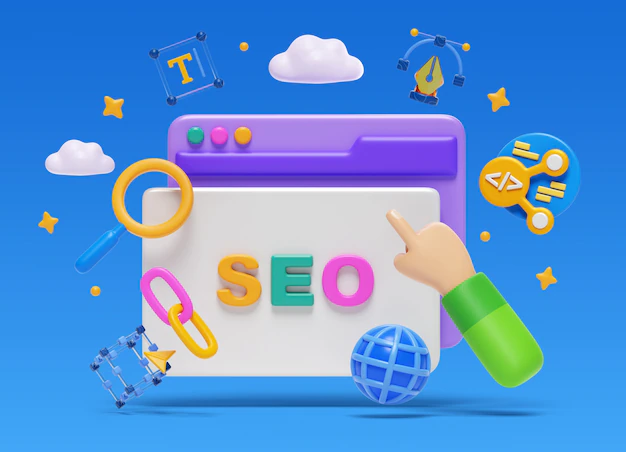When it comes to website performance, every second counts. Core Web Vitals, a set of metrics developed by Google, helps developers and marketers understand the critical factors contributing to user experience. One such vital metric is the Largest Contentful Paint (LCP), which plays a pivotal role in determining a website’s loading performance and its impact on SEO rankings.
But what exactly is LCP, and why is it so important? More critically, what steps can you take to identify and fix LCP issues on your site? This guide will walk you through everything you need to know about Google’s insights into LCP optimization and how you can leverage this knowledge to enhance your website’s user experience and SEO performance.
What Are Core Web Vitals? Understanding LCP
Core Web Vitals are a set of performance metrics introduced by Google to assess key aspects of a webpage’s user experience. LCP, specifically, measures the time it takes for the largest visible content element—like an image, video, or block of text—to load within a viewport.
Why LCP Matters
A fast LCP matters because it reflects a browser’s ability to quickly render the most essential content for users. A slow LCP negatively impacts user retention and satisfaction. According to Google, good LCP scores (under 2.5 seconds) are crucial for SEO since Core Web Vitals are ranking signals in search algorithms. This makes optimizing LCP critical not only for your audience’s experience but also for your visibility in search results.
Google’s Announcement on LCP and SEO Rankings
Google has emphasized that LCP is fundamental to Core Web Vitals and a key metric for search rankings. The company recently shared best practices for LCP optimization, urging developers and marketers to focus on improving load times across desktop and mobile platforms.
This announcement reinforces the increasing weight Core Web Vitals carry in SEO performance. Businesses with poor LCP scores risk losing ground in search rankings—even with strong content—because Google prioritizes user experience alongside relevance.
Understanding LCP Problems and Their Implications
What LCP Measures
LCP focuses on the load time of the largest visible content on a webpage. Examples of LCP elements include:
- Hero images
- Video thumbnails
- Headline text or large blocks of content
When these elements are delayed, users perceive the page as slow, leading to abandonment or dissatisfaction.
Common Causes of Poor LCP Scores
Several factors can impact your LCP score:
- Large Unoptimized Images: Slow-loading images are the top offender for delayed LCP.
- Server Delays: Slow server response times increase the content load time.
- Render-Blocking Resources: CSS or JavaScript files that don’t load efficiently can block the rendering of crucial elements.
- Client-Side Rendering (JavaScript): Taking too long to process large JavaScript bundles reduces LCP performance.
How to Diagnose LCP Issues
Identifying the root of your site’s LCP problems is the first step toward improvement. Here are the best tools and practices to help you diagnose LCP problems:
- Google PageSpeed Insights
PageSpeed Insights provides detailed Core Web Vitals reports, including your LCP score. It lists specific URLs with low LCP performance and suggestions for fixes.
- Lighthouse Audits
Google’s Lighthouse is an open-source tool that audits webpage performance. It highlights render-blocking resources and other LCP bottlenecks.
- Chrome DevTools
For developers, Chrome’s built-in DevTools enable you to measure LCP in real-time and debug page elements contributing to slow render times.
- Core Web Vitals Report in Google Search Console
This report helps webmasters identify pages across an entire site that fail to meet Core Web Vitals standards, including pages with poor LCP scores.
How to Fix LCP Issues
Once you’ve pinpointed the bottlenecks affecting your LCP, it’s time to take action. Here are five actionable strategies to improve your LCP scores:
1. Optimize and Compress Images
Large, uncompressed images are the biggest contributors to poor LCP. Tools like TinyPNG or ImageOptim can compress and optimize images without compromising quality. Use modern image formats like WebP to further reduce file sizes.
2. Improve Server Response Times
A slow server leads to delayed loading, negatively impacting LCP. Employ strategies like:
- Using a Content Delivery Network (CDN) to cache assets closer to users.
- Optimizing database queries to reduce server processing time.
- Upgrading to faster server technologies, such as HTTP/2.
3. Minify and Defer Render-Blocking Resources
Minimize render-blocking CSS and JavaScript to accelerate LCP. Tools like PurifyCSS and UglifyJS can help shrink file sizes. Additionally, defer unused JavaScript to stop it from delaying the rendering of key content.
4. Implement Lazy Loading
Lazy load media assets to ensure that above-the-fold content loads first. By prioritizing visible content, lazy loading significantly improves LCP scores for mobile and desktop users.
5. Leverage Browser Caching
Enable caching for recurring visitors to reduce load times. Advanced tools like Cloudflare provide caching solutions that save essential content in a user’s browser, boosting subsequent page visits.
Case Studies on Successful LCP Improvements
Example 1: Online Retailer Boosts LCP by 40%
An e-commerce brand implemented lazy loading for over 300 product images. With additional server optimizations, the brand improved LCP from 3.8 seconds to just 2.2 seconds, resulting in higher customer retention and a 15% increase in conversions.
Example 2: SaaS Company Reduces Server Delays
A SaaS provider reduced LCP from 4 seconds to 2.5 seconds by upgrading to an HTTP/2 server and offloading assets to a CDN. Their efforts resulted in a 12% improvement in SEO rankings within three months.
Future-Proofing Your Site for LCP Excellence
Optimizing LCP is not a one-and-done process. Web technologies are constantly evolving, and staying ahead requires ongoing efforts. Here are strategies to ensure your site remains LCP-friendly:
- Regularly Monitor Performance:
Use tools like Google Search Console to continually track your LCP and Core Web Vitals performance.
- Stay Updated on Best Practices:
Follow updates from Google and leading web performance blogs to adapt to new standards.
- Focus on Accessibility:
A faster site benefits all users. Prioritize accessibility to strengthen both UX and SEO.
Take Charge of Your Site’s Performance Today
Improving your site’s Largest Contentful Paint (LCP) is critical for delivering a fast, enjoyable user experience and maintaining competitive SEO rankings. By diagnosing issues early, implementing fixes like image optimization and server improvements, and continuously monitoring performance, you can ensure your website meets Google’s Core Web Vitals standards.
Your next step? Audit your pages with tools like Google PageSpeed Insights and start addressing key LCP issues today. There’s no better time to make your website faster and more user-friendly.

